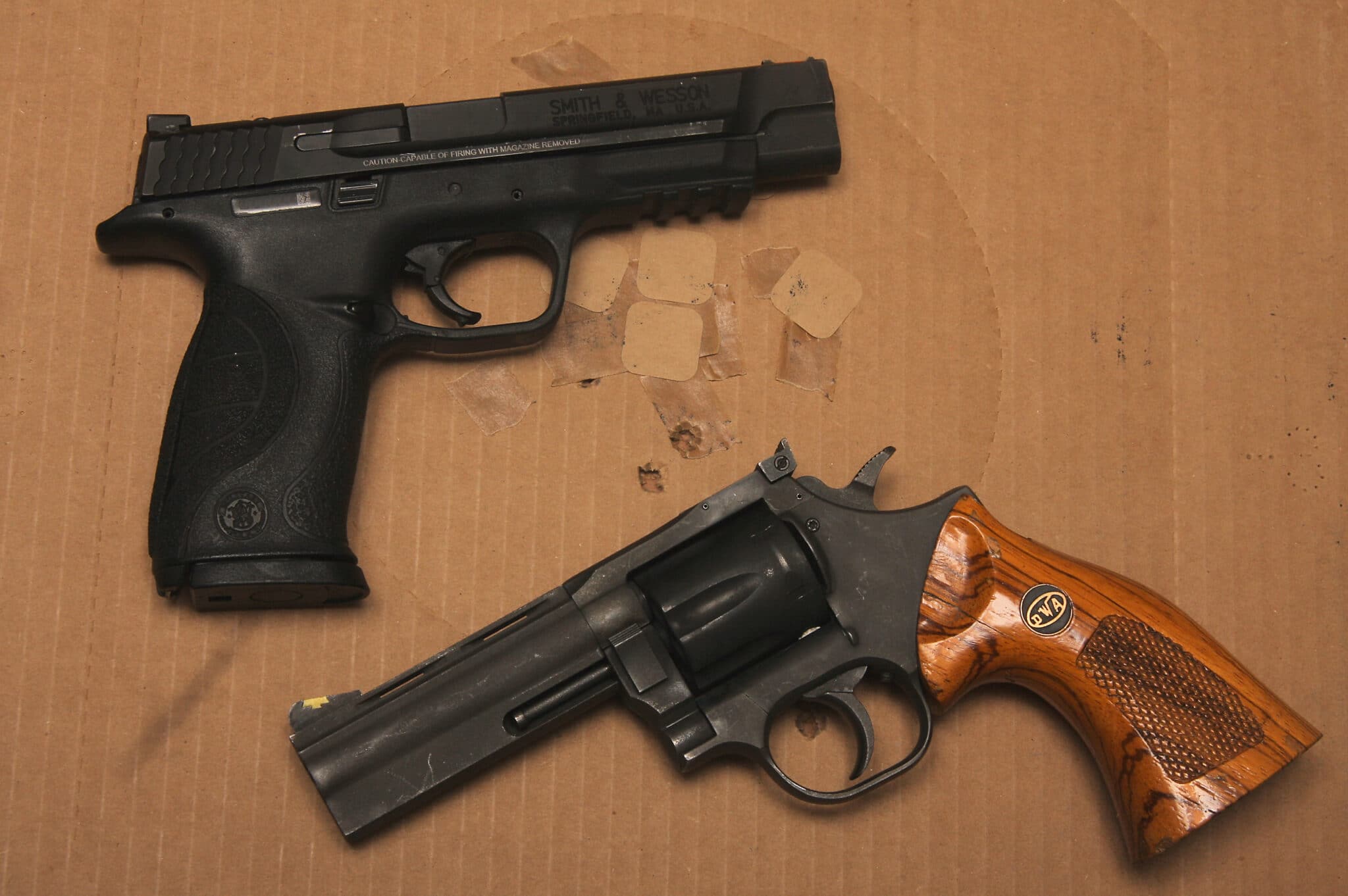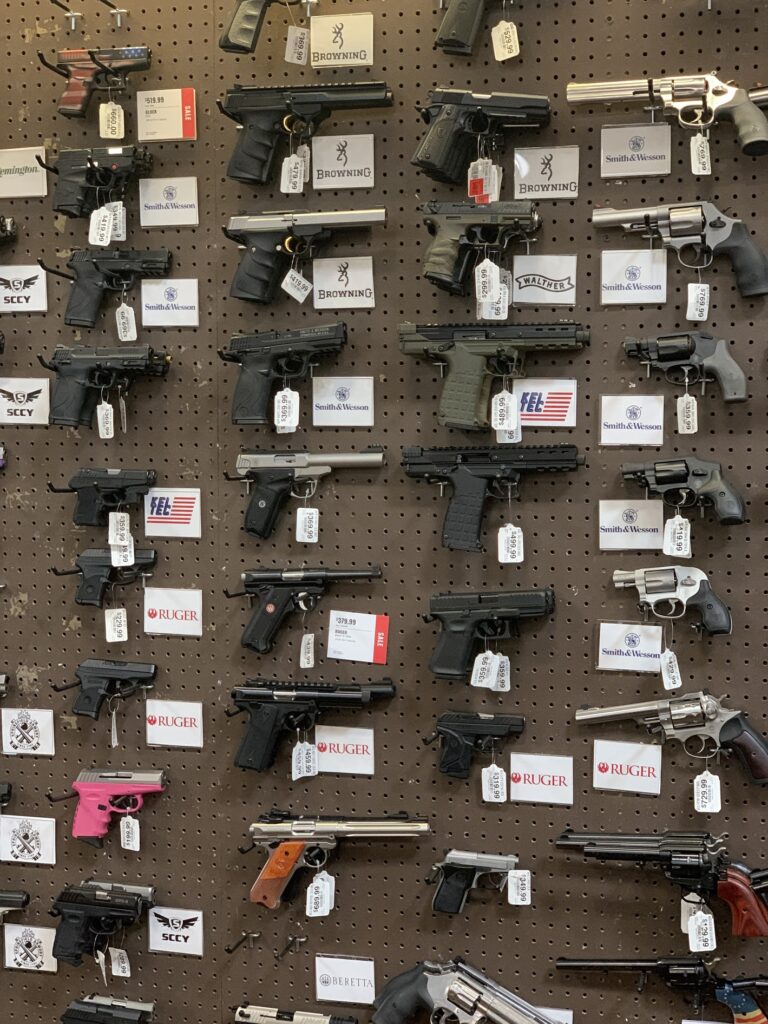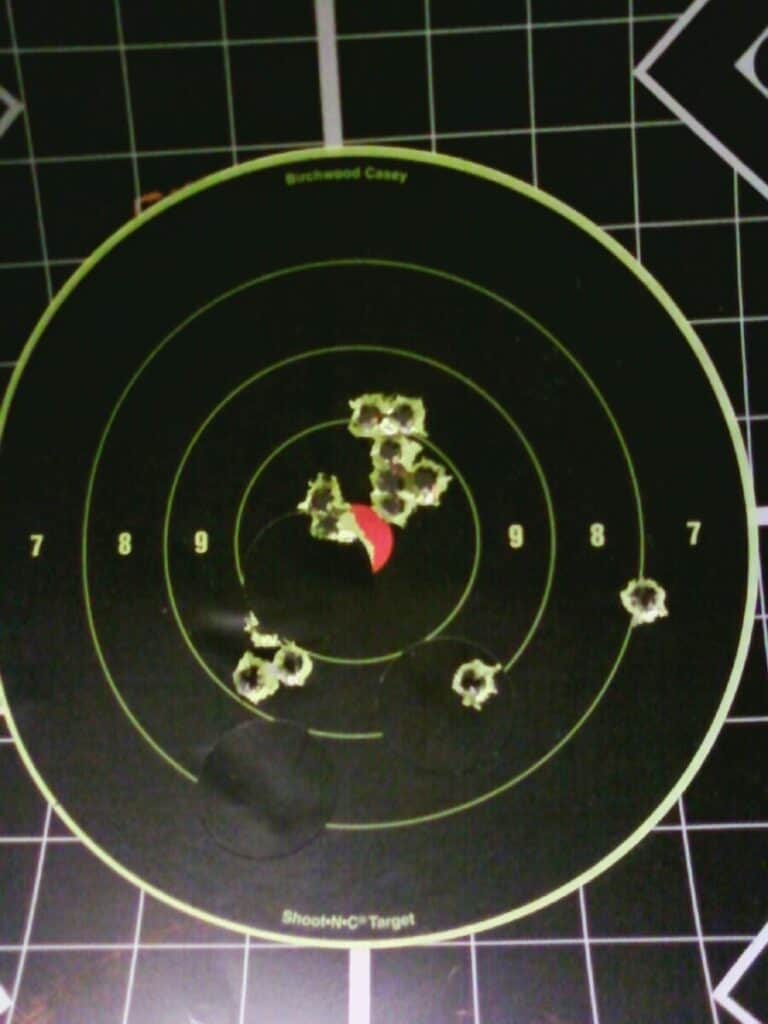357 Sig vs 357 Mag: Ballistic info and which to choose

The .357 Magnum was designed in 1934 by taking a .38 Special case and making it 1/10th of an inch longer and significantly more powerful. It became hugely popular and remains so today. When the .357 Sig was introduced, it looked to invoke the .357 name without shooting a .357 caliber bullet.
The .357 Magnum and .357 Sig are completely different cartridges but are based on the same idea; more velocity is better. They both have advantages and disadvantages compared to other cartridges, and both are available in modern firearms.
I will briefly cover the history of each cartridge, but the goal of this article is to focus on ballistics and uses. While different cartridges, they’re meant to be compared to each other all the same.
Bigger is Better
The .38 Special was designed at the end of the 19th century when black powder was still commonly used. It shot a .357 bullet but maintained the .38 caliber name for marketing purposes. It was more powerful than its predecessor but was by no means a modern, high-pressure cartridge.
The .357 Magnum was designed approximately 40 years later and used an elongated .38 Special case to allow .38 Special ammunition to fire in .357 Magnum guns, but not vice-versa. More importantly, it allowed for much bigger powder charges and was vastly more powerful.
In common factory loadings, the .357 Magnum is capable of shooting a 158-grain bullet at 1300 fps through a 4″ barrel. The iconic .38 Special +P “FBI” load will shoot the same weight bullet at about 900 fps.
Power-wise the .357 Magnum is in a different league than its predecessor.
In a full-size revolver, the recoil will be stout but not punishing for an experienced shooter. In a snub-nose revolver, even standard power .357 Magnum shells will be painful to shoot for almost anyone.
The .357 Magnum has been used in the past to take all sizes of North American game but it’s typically used for deer-sized animals in modern times. The people who carry a .357 Magnum for self-defense will often carry it in the outdoors for protection against dangerous game as well.

Smaller is Better, But Not to the Same Degree
The .357 Sig is based on a bottle-necked 40 S&W designed to shoot a 9mm (.355) bullet. Because of this, caliber swapping a pistol from .357 Sig to .40 S&W requires only a barrel change. Most .357 Sig and .40 S&W pistols are capable of shooting 9mm Luger with a barrel change and different magazines.
The .357 name is only used to associate it with the .357 Magnum. It is far from the only cartridge to be inaccurately named for one purpose or another. Its real competitor though is the 9mm Luger.
The .357 Sig ammunition most commonly uses medium-weight 9mm bullets. .357 Sig produces about 200 fps more velocity than 9mm Luger +P ammunition. While this is a measurable difference, it doesn’t compare to the power upgrade of .357 Magnum over .38 Special.
The .357 Sig is used for personal protection and is issued by some government agencies. Due to the incredible price of .357 Sig factory ammunition, most people who own a pistol in this cartridge will primarily shoot 9mm Luger or .40 S&W during practice. This will be done either with a spare barrel or a different firearm.
Important Differences Between the .357 Magnum and .357 Sig
Most gun owners know the basic difference between the two, but if you are relatively new to firearms this information is important.
- There is no cross-over between the two cartridges. They shoot different caliber bullets out of completely different cases. No single gun can shoot both cartridges.
- Shooters are going to almost always pick one over the other depending on if they want a revolver or a semi-automatic.
- Pistols in both cartridges have a cheaper source of practice ammunition but the .357 Sig pistol will require a barrel change. (Swapping out barrels in a .357 Sig is no harder than field stipping the firearm and spare barrels are quite affordable for common pistols)
- The .357 Magnum is a very popular revolver cartridge and ammunition is widely available in stores and online. .357 Sig isn’t by any mean unpopular, but the available choices are more limited.
Apples vs Oranges
Let’s compare typical ammunition options and see if the .357 Sig lives up to its namesake. The following results will be categorized by bullet weight and listed from slowest to fastest. The following velocity numbers are published by manufacturers.
Lightweight bullets: .357 Magnum vs .357 Sig
.357 Magnum with a 110-grain bullet from Winchester “White Box”: 1295 fps
.357 Sig with a 115-grain monolithic bullet from Underwood Ammo: 1450 fps
.357 Sig with a 115-grain bullet from Underwood Ammo: 1550 fps
.357 Magnum with a 120-grain monolithic bullet from Underwood Ammo: 1700 fps
Medium-weight bullets: .357 Magnum vs .357 Sig
.357 Sig with a 125-grain bullet from Federal American Eagle: 1350 fps
.357 Sig with a 124-grain bullet from Buffalo Bore: 1430 fps
.357 Magnum with a 125-grain bullet from Federal Train and Protect: 1440 fps
.357 Magnum with a 125-grain bullet from Hornady American Gunner: 1500 fps
.357 Magnum with a 125-grain bullet from Buffalo Bore: 1603 fps (4″ barrel)
Heavyweight bullets: .357 Magnum vs .357 Sig
.357 Magnum with a 158-grain bullet from CCI Blazer: 1150 fps
.357 Sig with a 147-grain bullet from Hornady Custom: 1225 fps
.357 Magnum with a 158-grain bullet from Federal American Eagle: 1240 fps
.357 Sig with a 147-grain bullet from Underwood Ammo: 1250 FPS
.357 Magnum with a 158-grain bullet from Buffalo Bore: 1485 fps (4″ barrel)

What the Numbers Say
For someone new to firearms looking for a clear winner, the above examples make everything clear as mud. While .357 Magnum always ends up on top, the .357 Sig does have the edge in some loadings. There are some reasons for this, but it is important to remember when both cartridges are pushed to the max, the .357 Magnum will always be more powerful.
With .357 Magnum ammunition though, it is not always pushed to the max. Because of the power difference between common .357 Magnum and .38 Special loadings, there is enough of a power gap for downloaded .357 Magnum ammo to find its place in the market.
People who own small and/or lightweight .357 Magnum revolvers find full power loads to be punishing to shoot. Some loads can even jam up the gun with bullet creep. Bullet creep is when the bullets of unfired cartridges start to pull out of the case and will stop a revolver in its tracks.
The .357 Magnum also has more power than is necessary for self-defense purposes. The maxed-out loadings are typically for hunting and protection from dangerous game.
For the .357 Sig, there is essentially no demand for less than full power ammo so the velocity numbers tend to be more consistent with similar bullet weights. People who want to shoot lower power ammo out of a .357 Sig will either reload it themselves or buy a drop-in 9mm Luger barrel.
So how does the .357 Sig compare to the .357 Magnum? It will never beat it power-wise, but very few people actually shoot the most powerful .357 Magnum cartridges. Semi-automatic .357 Sig pistols usually have a massive capacity advantage over .357 Magnum revolvers, if that is important to you.
